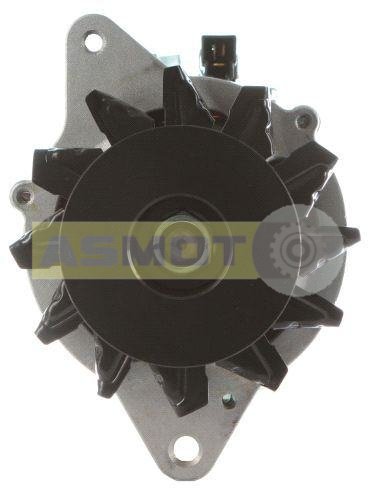I got a BJ44 recently and I absolutely love it! The batteries stopped charging after a while though.
I read some very helpful posts from @bj40green and I'm pretty sure my voltage regulator is bad. It's very discolored, and only putting out half a volt on the white/green wire described in this post: BJ42 - Electrical system woes (24v) - https://forum.ih8mud.com/threads/bj42-electrical-system-woes-24v.825227/#post-9470166
Anyways, the reason I have this question: the alternator was rebuilt near the end of 2019. It still looks very clean and new. If they did the rebuild wrong, could that take out the voltage regulator? I believe in checking what was recently changed when problems come up so... I'd hate to spend the money on a replacement all to blow it up again.
There are 3 wires on a plug going into the alternator, measuring from the alternator side of the plug to ground had one connection at 0 ohms (which looks fine according to the wiring diagram), another at a lowish ~3.5 ohms, and another at a much higher ohm reading that I probably don't need to worry about. It was really hard to see what color the wires are. If the voltage regulator was feeding 24 volts to that 3.5 ohm connection, there would be over 6 amps drawn, which seems high to me, but I don't really know what I'm talking about at this point.
I read some very helpful posts from @bj40green and I'm pretty sure my voltage regulator is bad. It's very discolored, and only putting out half a volt on the white/green wire described in this post: BJ42 - Electrical system woes (24v) - https://forum.ih8mud.com/threads/bj42-electrical-system-woes-24v.825227/#post-9470166
Anyways, the reason I have this question: the alternator was rebuilt near the end of 2019. It still looks very clean and new. If they did the rebuild wrong, could that take out the voltage regulator? I believe in checking what was recently changed when problems come up so... I'd hate to spend the money on a replacement all to blow it up again.
There are 3 wires on a plug going into the alternator, measuring from the alternator side of the plug to ground had one connection at 0 ohms (which looks fine according to the wiring diagram), another at a lowish ~3.5 ohms, and another at a much higher ohm reading that I probably don't need to worry about. It was really hard to see what color the wires are. If the voltage regulator was feeding 24 volts to that 3.5 ohm connection, there would be over 6 amps drawn, which seems high to me, but I don't really know what I'm talking about at this point.


